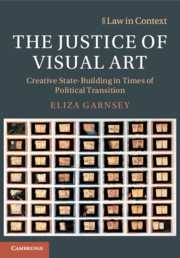Refine search
Actions for selected content:
12 results
Populism, visual technologies, and the self-mediation of ‘the people’ from the 2002 Venezuelan coup to the 2021 US Capitol riots
-
- Journal:
- Review of International Studies , First View
- Published online by Cambridge University Press:
- 27 October 2025, pp. 1-18
-
- Article
-
- You have access
- Open access
- HTML
- Export citation
9 - A Diplomatic Image and Its Afterlife
-
-
- Book:
- Cold War Asia
- Published online:
- 30 January 2025
- Print publication:
- 06 February 2025, pp 190-209
-
- Chapter
- Export citation
The role of non-elites and eyewitness videos in the visual securitisation of Calais asylum seekers
-
- Journal:
- European Journal of International Security / Volume 7 / Issue 4 / November 2022
- Published online by Cambridge University Press:
- 28 February 2022, pp. 413-434
-
- Article
-
- You have access
- Open access
- HTML
- Export citation
Visual diplomacy in virtual summitry: Status signalling during the coronavirus crisis
-
- Journal:
- Review of International Studies / Volume 48 / Issue 2 / April 2022
- Published online by Cambridge University Press:
- 19 October 2021, pp. 243-261
- Print publication:
- April 2022
-
- Article
-
- You have access
- Open access
- HTML
- Export citation
4 - Dead Terrorists and Dead Dictators
-
- Book:
- Global Corpse Politics
- Published online:
- 24 September 2021
- Print publication:
- 07 October 2021, pp 90-119
-
- Chapter
- Export citation
1 - Visualizing Corpse Politics
-
- Book:
- Global Corpse Politics
- Published online:
- 24 September 2021
- Print publication:
- 07 October 2021, pp 1-27
-
- Chapter
- Export citation

Global Corpse Politics
- The Obscenity Taboo
-
- Published online:
- 24 September 2021
- Print publication:
- 07 October 2021
Part II - Representing Transitional Justice on the Global Stage
-
- Book:
- The Justice of Visual Art
- Published online:
- 17 October 2019
- Print publication:
- 07 November 2019, pp 127-209
-
- Chapter
- Export citation
1 - Introduction
-
- Book:
- The Justice of Visual Art
- Published online:
- 17 October 2019
- Print publication:
- 07 November 2019, pp 1-9
-
- Chapter
- Export citation
11 - Conclusion
- from Part II - Representing Transitional Justice on the Global Stage
-
- Book:
- The Justice of Visual Art
- Published online:
- 17 October 2019
- Print publication:
- 07 November 2019, pp 205-209
-
- Chapter
- Export citation
Visual autoethnography and international security: Insights from the Korean DMZ
-
- Journal:
- European Journal of International Security / Volume 4 / Issue 3 / October 2019
- Published online by Cambridge University Press:
- 21 October 2019, pp. 274-299
-
- Article
-
- You have access
- HTML
- Export citation

The Justice of Visual Art
- Creative State-Building in Times of Political Transition
-
- Published online:
- 17 October 2019
- Print publication:
- 07 November 2019
